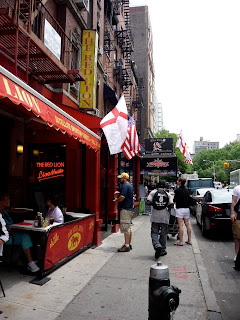Search This Blog
A strolling guide to New York City by writer and photographer Teri Tynes. Active during the years 2007-2021, Walking Off the Big Apple plans new walks away from the city in the summer of 2025.
Posts
Showing posts from June, 2010
Coming this summer 2025
A Hudson River Camino - a cultural and spirit-filled pilgrimage up river.
At Sotheby's for the Auction of the Polaroid Collection
- Get link
- X
- Other Apps
A Kind of Blue: A Walk Through Woodlawn Among the Blue Hydrangeas
- Get link
- X
- Other Apps
Strolling Notes: The World Cup in New York, the Situationist Dog, and a Footbridge in Tribeca
- Get link
- X
- Other Apps
A Walking Guide to Sixth Avenue / The Avenue of the Americas
- Get link
- X
- Other Apps
Studies in Blue and Green: The Hudson River Park, South of Houston, Morning
- Get link
- X
- Other Apps
What's Left of the Avenue of the Americas?
- Get link
- X
- Other Apps
June 11, 2025 in Beacon, NY

On a day trip from NYC








